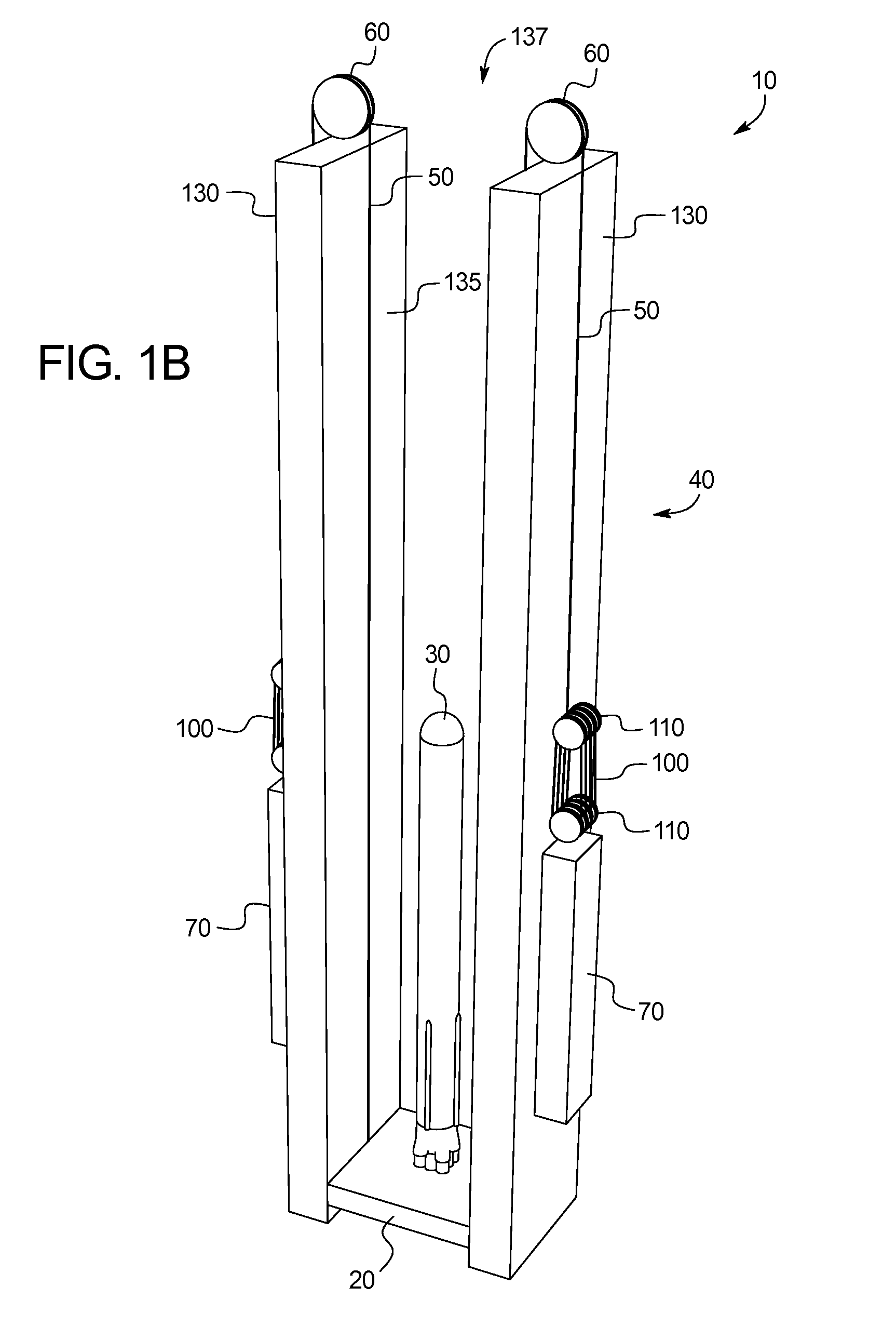Rocket launch tower
a rocket launch tower and rocket technology, applied in the field of rocket launch towers, can solve the problems of high cost, inability to deliver even a small payload to space, and inefficient rocket launch, so as to improve the reliability of rockets, increase the payload capacity of existing rockets, and save resources
- Summary
- Abstract
- Description
- Claims
- Application Information
AI Technical Summary
Benefits of technology
Problems solved by technology
Method used
Image
Examples
Embodiment Construction
[0065]FIGS. 1a and 1b illustrates an embodiment of a rocket launch tower 10. The rocket launch tower 10 includes a platform 20 that supports a rocket 30. In use, the rocket launch tower 10 launches the rocket 30 from the upward-moving platform 20 thereby imparting energy into the rocket 30 before or in conjunction with the rocket 30 using its own propellant.
[0066]The platform 20 may be connected to cables 50 to provide the upward force during launch. The cables 50 may, in turn, connect the platform 20 to an arrangement of counterweights 70 via a pulley system. During launch, the counterweights 70 are allowed to fall, accelerating the cables 50 to cause upward movement of the platform 20. A surrounding structure 40 guides the platform 50 and provides support to the cables 50 via pulleys 60 at the top of surrounding structure 40 that engage the cables 50. As shown, the surrounding structure 40 may include one or more guide towers 130 that may guide the platform 20 during ascent.
[0067]...
PUM
 Login to View More
Login to View More Abstract
Description
Claims
Application Information
 Login to View More
Login to View More - R&D
- Intellectual Property
- Life Sciences
- Materials
- Tech Scout
- Unparalleled Data Quality
- Higher Quality Content
- 60% Fewer Hallucinations
Browse by: Latest US Patents, China's latest patents, Technical Efficacy Thesaurus, Application Domain, Technology Topic, Popular Technical Reports.
© 2025 PatSnap. All rights reserved.Legal|Privacy policy|Modern Slavery Act Transparency Statement|Sitemap|About US| Contact US: help@patsnap.com



